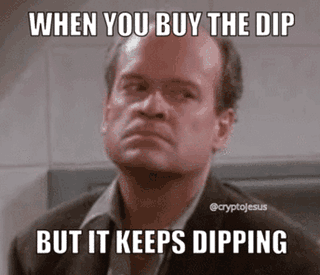All Out June 9th: How to short NVDA
We were talking with a client a couple of days ago about the monster move in Nvidia (ticker: NVDA). As a refresher, NVDA is reported earnings last Wednesday; they reported spectacular numbers and the stock immediately popped, opening up 30% the next day. Before earnings the stock was already up around 100%, and the earnings pop brought it to 169% year to date. The pricing for the stock is crazy. It’s currently trading at 36 times price to sales. This means that for investors to get their money back the company would have to pay out their entire sales year after year for 36 years (sales, not earnings). The reason for this inflated price is the growth that’s priced into the stock, investors are betting NVDA is going to be a huge beneficiary of the whole AI movement. But even if they are, the pricing on the stock is pretty wild.
So let’s say you thought the stock was overvalued and was going to drop. How could you make money off of this? There are several trades that come to mind:
- Short the stock outright
- Buy put options (or put spreads)
- Sell call options (or call spreads)
If the stock drops all these trades will make money to varying degrees (assuming it drops enough). But what’s the risk return profile to each one? We thought this would be a nice example to think through how you could structure a trade, looking at different trades and their payoffs using real market prices.
Before we get into details we need to get some base data and set some assumptions. NVDA is trading at $385, and let’s assume you think it will drop within 6 months. Let’s assume you don’t have an exact price target (if you did then we can get more creative with trades).
Trade #1: Short the stock outright
Shorting a stock is basically selling a stock without owning it first. So you borrow stock from someone else and sell it. For this trade to make money the stock has to drop from the point at which you sold it. So if you sell when the stock is at $100, and buy back when it’s $60 you essentially made $40 (minus borrow costs, more on that later). Since you borrow the stock to sell, you end up with a negative position; therefore you eventually need to buy it back to return the borrowed stock.
In order to borrow the stock you need to pay whoever owns it for them to lend it to you, this is called the borrow cost. The risk in the trade is that the stock goes up and you sell low and buy high. In the above example if the stock goes up to $250 you lost $150. So in theory there is unlimited loss potential and capped upside potential (a stock can only drop to $0 but in theory could go up an infinite amount).
Getting back to NVDA, stock trades at $385, the borrow cost for shares is close to zero, so we can ignore that for this example. So for this trade to make money the stock has to drop in 6 months (this simplifies things a bit since borrow costs can and do change constantly). The table below shows the profit and loss (pnl) for this trade at varying levels of stock price after 6 months.
| NVDA Price | Short Stock |
| $ 200 | $ 185.10 |
| $ 220 | $ 165.10 |
| $ 240 | $ 145.10 |
| $ 260 | $ 125.10 |
| $ 280 | $ 105.10 |
| $ 300 | $ 85.10 |
| $ 320 | $ 65.10 |
| $ 340 | $ 45.10 |
| $ 360 | $ 25.10 |
| $ 380 | $ 5.10 |
| $ 400 | $ (14.90) |
| $ 420 | $ (34.90) |
| $ 440 | $ (54.90) |
| $ 460 | $ (74.90) |
| $ 480 | $ (94.90) |
| $ 500 | $ (114.90) |
| $ 520 | $ (134.90) |
So the maximum gain is $385 and the max loss is infinite (realistically it’s more like $385 assuming the stock doubles from here, which is a huge stretch).Trade #2: Buy a put option (or put spread)
The second trade is to buy a put option. A put option gives the holder the right, but not the obligation, to sell an asset at a future date for a certain price. So if you buy a put option on NVDA at $340, this gives you the right to sell NVDA for $340 anytime between now and the options expiration. In order to make money NVDA would have to fall to a price lower than $340. Let’s say it fell to $300, you would make $40 (minus whatever it cost to buy the option).
Options include another layer of complexity because you need to choose a strike price. In order to keep things simple lets say you don’t know how much it will fall so you just want to buy an at the money (ATM) option. An ATM options is the option with a strike price which is the same as the current stock price.
The price for a 6 month $380 strike put option on NVDA is $45.4. To make money in this trade NVDA has to fall to at least $334.6 by December 23rd. The tricky thing with options is the pricing. An options price is composed of two things, the extrinsic value and intrinsic value. The intrinsic value is essentially the difference between the strike price and the current stock price. The extrinsic price is the time value of the option. Since the option doesn’t expire immediately there is value in the time to expiration. Lets assume the stock price today is $100 and you put option is with a strike of $90. The intrinsic value of this option is $0, $90 – $100 = -$10.00, since an option cannot be worth less than $0, the intrinsic value is $0. The extrinsic value is the value that something happens in the meantime.
The benefit of buying a put option is that the maximum loss is capped to whatever the option premium was. The downside is that the put is expensive. One way to reduce the cost of the put is to buy a put spread. This means you buy a put and sell a further outside of the money put. This has the benefit that it reduces the cost but it will also cap your upside. If we bought the $380 put and sold the $300 put, our max gain is $80 minus the cost of the spread ($30.4 in this case), but our max loss is also lowered to 30.4 instead of $45.4 in the previous case. The following table adds the put and put spread options to the profit and loss table.
| NVDA Price | Short Stock | Long Put | Long Put Spread |
| $ 200 | $ 185.10 | $ 134.60 | $ 49.60 |
| $ 220 | $ 165.10 | $ 114.60 | $ 49.60 |
| $ 240 | $ 145.10 | $ 94.60 | $ 49.60 |
| $ 260 | $ 125.10 | $ 74.60 | $ 49.60 |
| $ 280 | $ 105.10 | $ 54.60 | $ 49.60 |
| $ 300 | $ 85.10 | $ 34.60 | $ 49.60 |
| $ 320 | $ 65.10 | $ 14.60 | $ 29.60 |
| $ 340 | $ 45.10 | $ (5.40) | $ 9.60 |
| $ 360 | $ 25.10 | $ (25.40) | $ (10.40) |
| $ 380 | $ 5.10 | $ (45.40) | $ (30.40) |
| $ 400 | $ (14.90) | $ (45.40) | $ (30.40) |
| $ 420 | $ (34.90) | $ (45.40) | $ (30.40) |
| $ 440 | $ (54.90) | $ (45.40) | $ (30.40) |
| $ 460 | $ (74.90) | $ (45.40) | $ (30.40) |
| $ 480 | $ (94.90) | $ (45.40) | $ (30.40) |
| $ 500 | $ (114.90) | $ (45.40) | $ (30.40) |
| $ 520 | $ (134.90) | $ (45.40) | $ (30.40) |
Trade #3: Sell a call (or call spread)The third way is to sell a call option. A call option gives the holder the right, but not the obligation, to buy an asset at a future date for a certain price. So if you sell a call you may be forced to sell an asset in the future (noticed we used the word forced since if you’re an option seller you don’t have the choice of whether to exercise the option or not). If the buyer of the call wants to buy the underlying, you, as the seller, have to sell.
A $390 strike call option on NVDA is worth $55.24. In order for this trade to have a positive pay off, NVDA needs to end below $445.24 at expiration. Anything above $445.24 will mean the trade incurred a loss. The risk in this trade is to the upside. The most you can make is the call premium, $55.24 in this case, but the theoretical loss is infinite (in reality it’s not infinite since there’s only so much a stock can go up in 6 months but it could be many multiples of the initial call price). The interesting thing about selling the call is that you don’t have to be exactly right on your thesis about it dropping. You can even make money if NVDA still goes up slightly from here.
The downside of this trade is that there is unlimited loss potential. If NVDA stock rips higher you will take a large loss. The way to prevent this is to sell a call spread. Selling a call spread involves selling a call and buying a further out of the money call to cap the maximum loss. This will cap the maximum loss but also reduce the payout, since the call you bought will cost money. In this case we could buy a $480 call. This would cost us $26.25 but would cap the maximum loss to $90 minus the spread cost ($28.99) for a total max loss of $61.01. The following table lists all options we talked about.
| NVDA Price | Short Stock | Long Put | Long Put Spread | Short Call | Short Call Spread |
| $ 200 | $ 185.10 | $ 134.60 | $ 49.60 | $ 55.24 | $ 28.99 |
| $ 220 | $ 165.10 | $ 114.60 | $ 49.60 | $ 55.24 | $ 28.99 |
| $ 240 | $ 145.10 | $ 94.60 | $ 49.60 | $ 55.24 | $ 28.99 |
| $ 260 | $ 125.10 | $ 74.60 | $ 49.60 | $ 55.24 | $ 28.99 |
| $ 280 | $ 105.10 | $ 54.60 | $ 49.60 | $ 55.24 | $ 28.99 |
| $ 300 | $ 85.10 | $ 34.60 | $ 49.60 | $ 55.24 | $ 28.99 |
| $ 320 | $ 65.10 | $ 14.60 | $ 29.60 | $ 55.24 | $ 28.99 |
| $ 340 | $ 45.10 | $ (5.40) | $ 9.60 | $ 55.24 | $ 28.99 |
| $ 360 | $ 25.10 | $ (25.40) | $ (10.40) | $ 55.24 | $ 28.99 |
| $ 380 | $ 5.10 | $ (45.40) | $ (30.40) | $ 55.24 | $ 28.99 |
| $ 400 | $ (14.90) | $ (45.40) | $ (30.40) | $ 45.24 | $ 18.99 |
| $ 420 | $ (34.90) | $ (45.40) | $ (30.40) | $ 25.24 | $ (1.01) |
| $ 440 | $ (54.90) | $ (45.40) | $ (30.40) | $ 5.24 | $ (21.01) |
| $ 460 | $ (74.90) | $ (45.40) | $ (30.40) | $ (14.76) | $ (41.01) |
| $ 480 | $ (94.90) | $ (45.40) | $ (30.40) | $ (34.76) | $ (61.01) |
| $ 500 | $ (114.90) | $ (45.40) | $ (30.40) | $ (54.76) | $ (61.01) |
| $ 520 | $ (134.90) | $ (45.40) | $ (30.40) | $ (74.76) | $ (61.01) |
So now we’ve seen three ways to make money off NVDA going down. Each has their own risks and rewards. The exact structure really depends on your conviction. Buying a put has the benefit of having a defined maximum loss (the put premium), it has plenty of upside, but it is the trade which requires you to really get the direction right, since the stock would have to drop by 13% for it to start making money.
Selling a call is probably the trade which requires the least conviction. In order to make money with this trade you don’t need the stock to drop a lot. In fact if the stock drops to $0 or just stays at $385 you will make the same amount of money $55.24. The danger with this trade is that you can lose many multiples if the stock continues to rise. However, you can always buy a call further out of the money to seal the maximum loss.
Shorting the stock is somewhat of an in between trade between the other two. In order to make money you need the stock to drop. You’re exposed to the upside if the stock keeps on rising. However, if the stock doesn’t move much you don’t really lose much money (apart from the borrow cost).
So will NVDA keep on going up or fall back down? Who knows, we have no special insight into the stock or what it might do. However, if we did have to choose a trade we would probably sell a call spread in order to cap the maximum loss and still make money if the stock didn’t really move much from here. Of course this is purely informational and is not investing advice.





